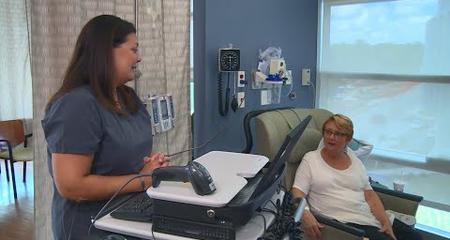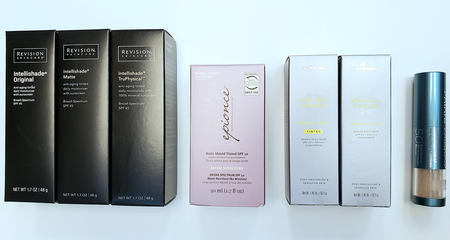Regular exams by your doctor — and checking your own skin frequently — can help you find skin cancer early when it is easier to treat with a better outcome.
As part of a regular check-up, your primary care provider or dermatologist should check your skin carefully. All areas of the skin should be looked at, including hard-to-see areas such as under the arms, buttocks, between the buttocks, genital areas, back, scalp, between fingers and between toes. Skin exams are especially important for people with higher risk of skin cancer, such as those with fair skin, reduced immunity, a family history of skin cancer or a personal history of skin cancer.
Regular eye exams and dental exams are important, too — especially for patients at high risk of melanoma, including people age 65 and older who have fair skin, and people with atypical moles or people with more than 50 moles.
Talk with your doctor about a skin exam schedule that is right for you.
Self-Exams to Find Skin Cancer Early
Skin cancer may be detected early by performing a self-examination. It is important to think of the ABCDE’s when evaluating spots or moles.
- Asymmetry: One half of the mole is not the same size or shape as the other.
- Border: Borders are uneven, or poorly defined.
- Color: The mole has multiple shades of color
- Diameter: The mole is 6mm or greater (~ size of a pencil eraser).
- Evolving: The size, shape, color or elevation changes.
Know Your Risk Factors for Skin Cancer
Risk factors for skin cancer include:
- Lighter natural skin color
- Family history of skin cancer
- Personal history of skin cancer
- Exposure to sun through work and play
- History of sunburn, especially early in life
- History of indoor tanning
- Skin that burns, freckles, reddens easily or becomes painful in the sun
- Blue or green eyes
- Blond or red hair
Skin of Color
Regardless of skin type, UV radiation from the sun and other sources can cause long-term damage to your skin. People from any ethnic background, even those who tan or rarely burn, can get skin cancer. People of color have been found to have skin cancer diagnosed at later stages, in which the cancer is harder to treat. This includes people from African, Asian, Latino, Mediterranean, Middle Eastern and Native American descent. It is important to protect your skin no matter your skin color.
Reduce Your Risk of Getting Skin Cancer
Protect yourself from ultraviolet radiation (UV) all year round, especially between 10 a.m. and 4 p.m., when UV exposure is greatest. Avoid indoor tanning, which also exposes you to UV radiation. Take these additional steps to protect yourself:
- Stay in the shade, especially midday.
- Wear clothing that covers your arms and legs.
- Wear a hat with a wide brim to shade your face, head, ears and neck.
- Wear sunglasses that wrap around and block UVA/UVB rays.
- Use sunscreen with an SPF of 30 or higher and UVA/UVB protection — and reapply it every two or three hours. Invest in clothing with a 50+ UV protection factor (UPF)
The Medical College of Wisconsin (MCW) has been recognized as a Skin Smart Campus by the National Council on Skin Cancer Prevention. This initiative promotes a safe and healthy lifestyle with skin cancer prevention and education as its core values.
Virtual Visits Are Available
Safe and convenient virtual visits by video let you get the care you need via a mobile device, tablet or computer wherever you are. We’ll gather your medical records for you and get our experts’ input so we can offer treatment options without an in-person visit. To schedule a virtual visit, call 1-866-680-0505.
More to Explore





